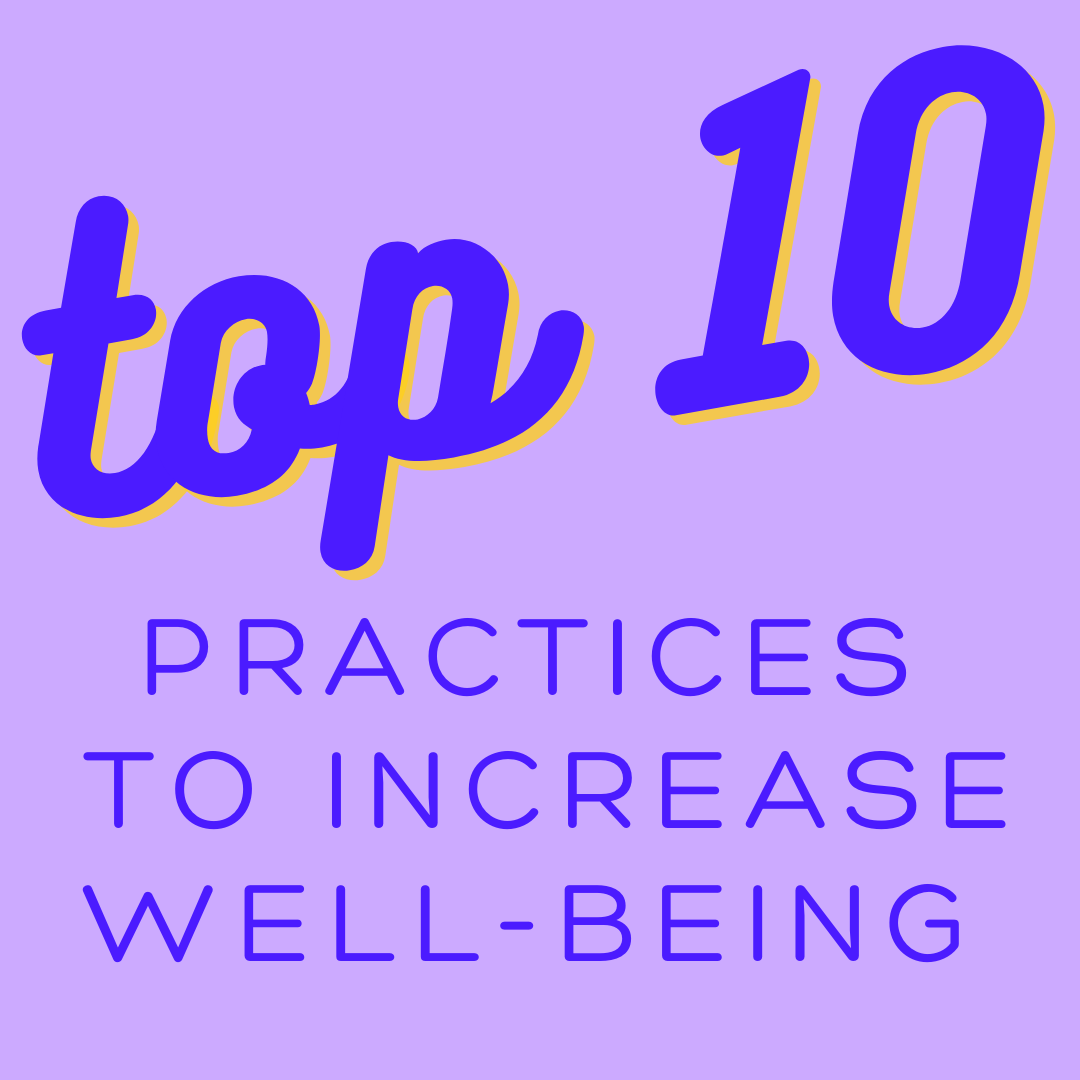If well-being is the goal, what can we do to increase our overall health and well-being?
There are a number of exercises and resources from Positive Psychology and beyond that can help maintain a strong PERMA framework and increase well-being in each area. I've made some notes below about exercises in each one, and clustered them in the visual below according to whether they serve to increase our positive emotions, engagement and flow, strengthen our relationships to others, help us find meaning or purpose in our lives or motivate us through accomplishments and achievement.
These are of course, just some initiatives - take a moment to imagine any practices you are aware of, or currently practicing - that could further build each of these areas of well-being.
....
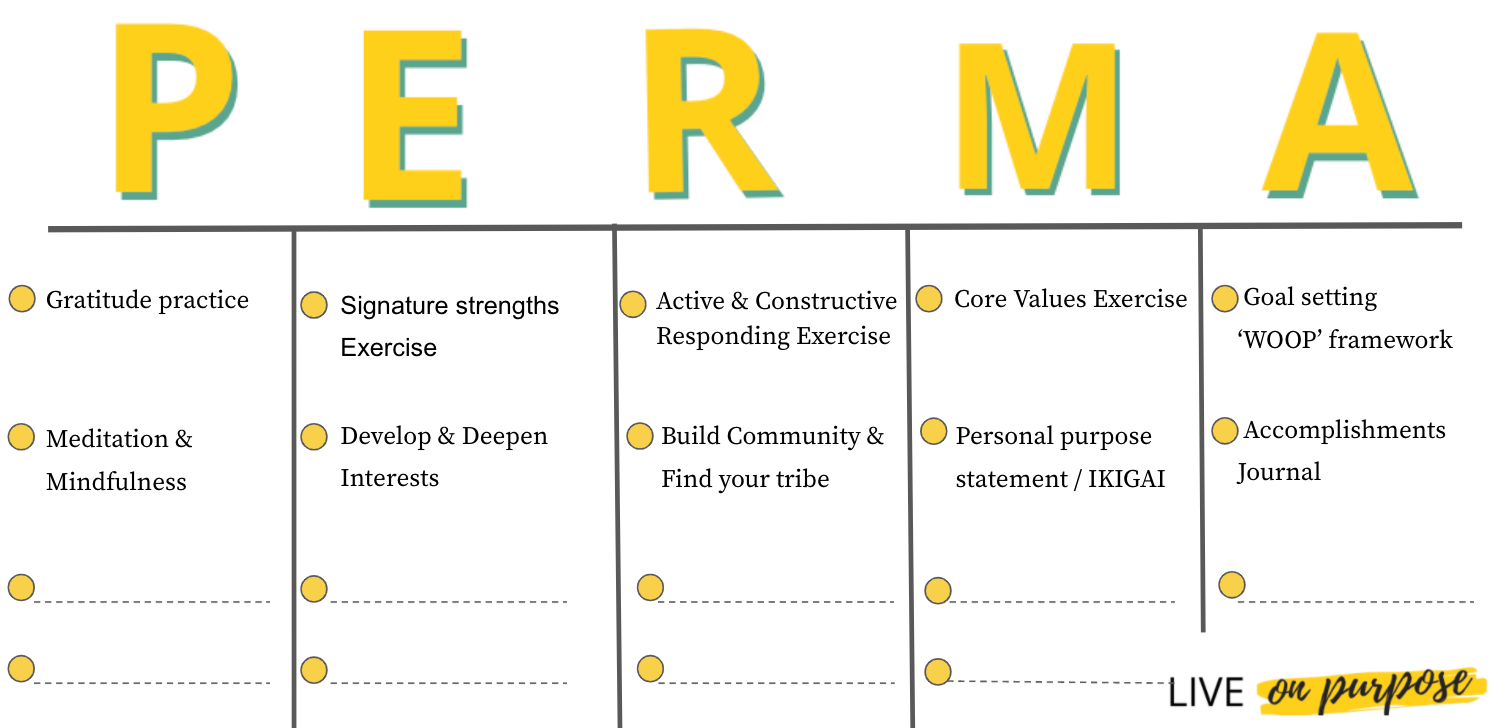
1. Establish a regular gratitude practice to focus on positive emotions
This is number one for so many reasons - Gratitude is the single biggest predictor of well-being that there is. Focus on what is good, on what you have instead of what you lack, and positive emotions increase. Commit to a daily gratitude practice to increase positive emotions.
Here are a few types of gratitude exercises to try:
- 5 Minute Journal (see below) : I use this book for my gratitude practice, and on top of increasing positive emotions like gratitude, it helps me to bring focus to my day and live with intention.
- ‘Hunt the Good’ : Take a moment in the evening to identify three good things that happened during the day & why they happened. This 'Why' is often a helpful way to expand feelings of gratitude, or can even help us to find a silver lining.
- Write a gratitude letter to someone who affected your life and double your happiness : this is a great way to increase feelings of happiness and gratitude in your life and in others.
2. Use mindfulness & meditation to savour positive emotions
While gratitude practices have repeatedly shown to have the greatest effect on increasing positive emotions and well-being, mindfulness and meditation practices can help too. When you are thinking of many things at the same time - it makes it harder to notice and focus on the positive emotion in the mix. Slow things down to find awareness in what you are feeling. A slower, calmer state is ideal for reducing anxiety and stress and attracting happy feelings.
When you experience something positive - try to hold on to that feeling for a longer period of time. In the words of positive psychology, this is called 'savouring'. Recall as many specific details of the event or emotion as possible and keep this in your mind.
For anyone wanting to learn in much more depth about mindfulness and meditation from someone with decades of experience, I can recommend the free and accessible online courses from Peter Riedl from W.I.S.D.O.M. (in German)
3. Knowing and exercising your signature strengths for higher engagement
Engagement happens when we get lost in an activity, access a flow state, lose track of time. You are more likely to have high engagement and find flow in activities that you are naturally good at, where you have the opportunity to exercise your signature strengths to solve a problem or create a solution. Do you know what yours are?
In 2004, Christopher Peterson and Martin Seligman came out with their Character Strengths and Virtues book and classification - looking at 24 character strengths, categorized into six virtues: wisdom, courage, humanity, justice, temperance, and transcendence. You can find out your top 5 signature strengths, by completing the free Values In Action (VIA) Questionnaire. Once you know your strengths, think of an activity where you can exercise them in a new way, or use them to master a challenge you are currently facing.
4. Increase engagement and flow by developing and deepening your interests
When you know what you are passionate about - it is easy to find purpose and engagement. But, what if you feel not that passionate about anything? Think about what naturally interests you and where you end up spending your time. And then - go deeper into these interests areas, to gain more understanding of that area.
Flow tends to happen in situations where skills are closely matched to challenges. Flow is is growth oriented - so it follows that learning and expertise drives engagement. Engagement drives flow.
5. Improve your relationships through active & constructive responding
You know what is key to Well-Being? Other people. Having strong relationships to family members, friends and business colleagues can go a long way towards increasing happiness and level of well-being. Being present and supportive when someone is going through a rough patch is important, but equally important is being there for them when things are going well - sharing their wins and increasing joy.
So - what is one of the best ways to improve relationships? Listening. Or, in positive psychology terms - Active and Constructive Responding. This is a practice of listening with full attention, being supporting, asking for details and really letting that other person share their full experience with you. This is how to be a "Joy Multiplier". This style of communication inspires trust, increases intimacy and leaves both people feeling uplifted and connected.
6. Strengthen relationships by consciously building your community
Who is your community? Whom do you serve? These are important questions to ask yourself, because feeling of belonging and being of service are also great ways to increase well-being levels. This can be a sports group, an online-community centered around interests or hobbies, it can be a parents group at your child's school, an AA group, or a volunteer activity. Whatever it is for you, being a conscious part of a community feels great.
7. Increase meaning in your life, by identifying your core values
Now we arrive at meaning - ways to increase happiness and well-being by having a sense of purpose in life, knowing why we do what we do, and feeling a connection to a higher cause.
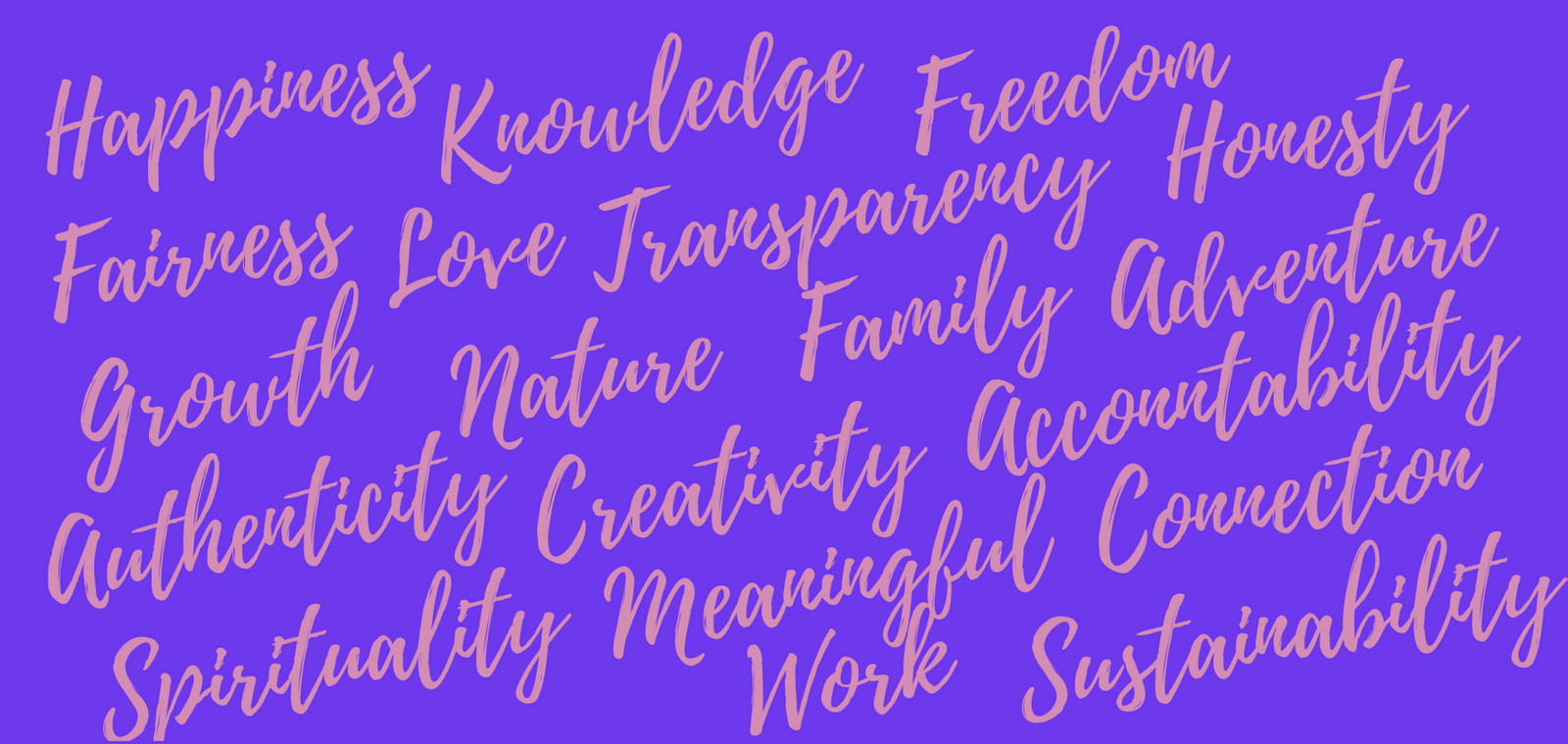
Knowing what your core values are is essential to living a meaningful life and tapping into a feeling of purpose; and often helps us to better understand ourselves. Once we know what these are, we know much better what the right path and right decisions for us are. I wrote a separate piece here on how to define your core values in five simple steps. If you haven't take the time to refine these for yourself to understand what is motivating your decisions, and how to make better decisions, read on!
8. Write a personal purpose statement to keep you aware of your greater purpose
Knowing your purpose and having a personal mission statement can increase meaning and engagement with work. If you already know what this is for you - have it written down and accessible. Make it part of your personal brand and include it in your communications with others. If you are still unsure about your purpose - take a moment to think through some guiding questions and use the Hedgehog / Venn diagram and the Ikigai diagram as tools to mapping out your unique purpose. Remember - it doesn't have to be perfect, and it doesn't have to be forever - it should be right for you, right now.

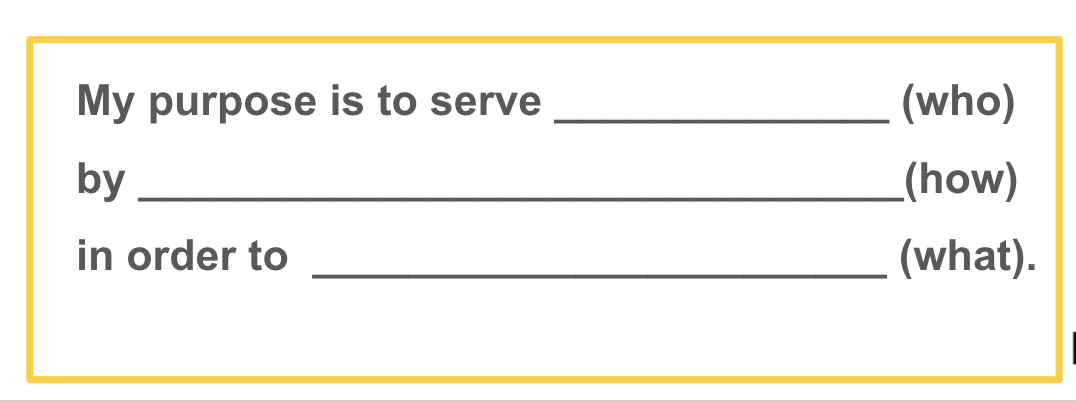
9. Increase feelings of achievement with personal and professional goals
Coming back to the idea of knowing why you are doing something, as being essential to a state of well-being, it follows that when we are conscious of our goals, and know that what we are working on is helping us to advance towards achieving them - we will have higher well-being.
Develop a set of life goals, taking both personal and professional goals into mind, that are in line with the positive vision you have of yourself in the future, and to have something to work towards.
But remember, a wish without a plan, remains just a wish. Gabriele Oettingen and Peter Gollwitzer developed a technique for goal setting they call WOOP (Wish, Outcome, Obstacle, Plan) - this technique can help with identifying where you are stuck with your goals - is your plan realistic? Is it broken down into small enough steps? Have you identified which obstacles may stand in your way?
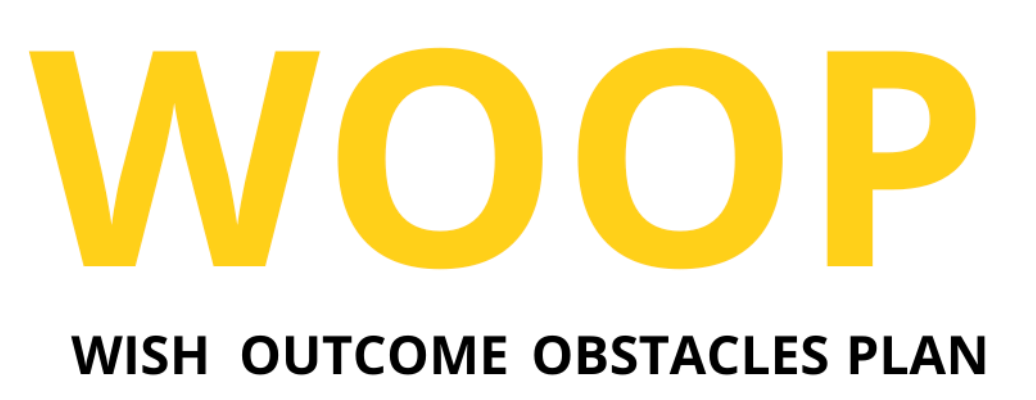
10. Increase feelings of achievement with an accomplishments journal
Setting goals, and creating plans for follow through is important - but what is equally important is acknowledging our successes and consciously celebrating those wins. You can do this publicly on social media, or you can do it privately for yourself in an accomplishments journal. The important thing, is that you do celebrate yourself and allow others to celebrate your wins too.
PS: This is also uplifting to do for others - if you see someone around you succeed - celebrate them and their accomplishment. Guaranteed - you will both get a boost of happiness.
What do you think?
These are just some of my top tips for a strong practice of well-being - what have you found to increase your happiness? Where would it fit in the PERMA theory? Write it down, and practice it often. Share it with our purpose-community!

